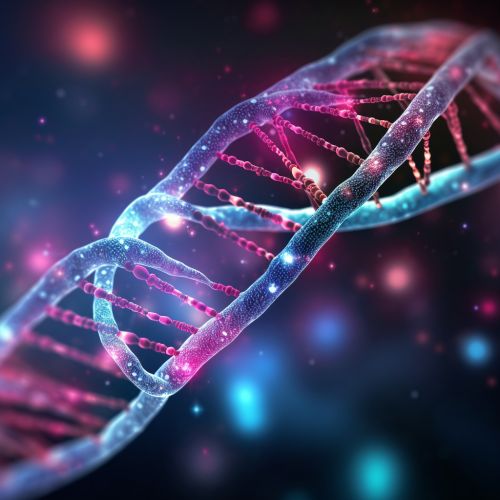Transposable elements
Introduction
Transposable elements (TEs), also known as "jumping genes," are DNA sequences that can change their position within a genome, a phenomenon known as transposition. This ability to move can have a profound effect on the genome's organization and function, leading to mutations and changes in the genome's size.


Classification
Transposable elements are classified into two major types based on their mechanism of transposition: Class I (retrotransposons) and Class II (DNA transposons).
Class I: Retrotransposons
Retrotransposons are transposable elements that transpose via an RNA intermediate. The RNA is transcribed from the DNA template, and then reverse-transcribed back into DNA by the enzyme reverse transcriptase. This DNA copy is then inserted at a new site in the genome. Retrotransposons are further divided into two types: LTR (long terminal repeat) retrotransposons and non-LTR retrotransposons.
Class II: DNA Transposons
DNA transposons move within the genome by a "cut and paste" mechanism, which does not involve an RNA intermediate. The transposon is excised from one location and inserted into another by the enzyme transposase. DNA transposons are less common than retrotransposons in the human genome.
Mechanism of Transposition
The mechanism of transposition involves several steps, including excision, integration, and repair. The exact process varies depending on the type of transposable element.
Excision
In DNA transposons, the transposase enzyme recognizes the transposon's terminal inverted repeats (TIRs) and makes a staggered cut at the target site, excising the transposon. In retrotransposons, the RNA intermediate is reverse-transcribed into DNA.
Integration
The transposase enzyme then inserts the excised transposon at a new site in the genome. In retrotransposons, the DNA copy is integrated into the genome by the enzyme integrase.
Repair
Following integration, the gaps left by the excision of the transposon are repaired by the host cell's DNA repair machinery. This often results in the duplication of a short sequence at the insertion site, known as a target site duplication (TSD).
Role in Genome Evolution
Transposable elements play a significant role in shaping the genome. They can induce mutations, alter gene expression, and contribute to genomic diversity and evolution.
Induction of Mutations
Transposition can disrupt genes and regulatory regions, leading to mutations. These mutations can have various effects, from benign to harmful, depending on their nature and location.
Alteration of Gene Expression
Transposable elements can influence gene expression by inserting themselves into or near genes. They can also carry regulatory sequences that can alter the expression of nearby genes.
Contribution to Genomic Diversity and Evolution
Transposable elements contribute to genomic diversity by creating new genes or modifying existing ones. They can also drive genome evolution by promoting recombination, leading to chromosomal rearrangements.
Medical Implications
Transposable elements have been implicated in several human diseases, including cancer, neurological disorders, and autoimmune diseases. They can disrupt genes and regulatory regions, leading to disease. However, they also have potential therapeutic applications, such as in gene therapy.
Conclusion
Transposable elements are a fascinating aspect of genomics, with significant implications for genome structure, function, and evolution. Despite their potential to cause disease, they also offer exciting possibilities for therapeutic applications.
